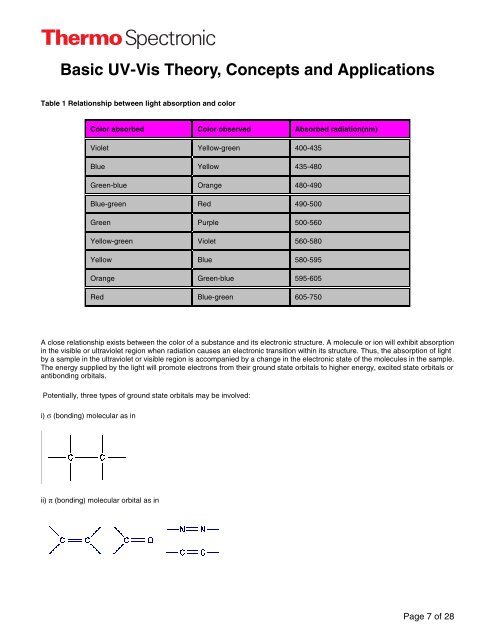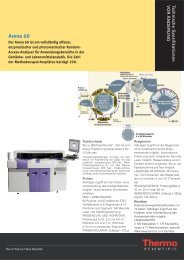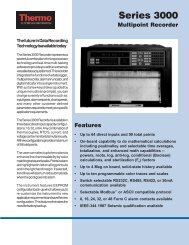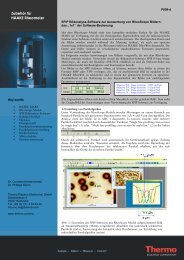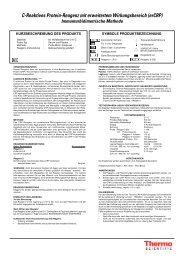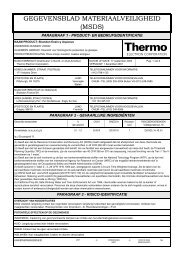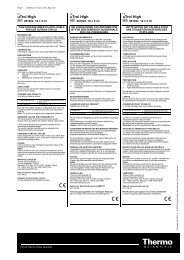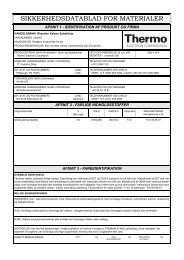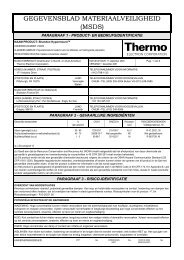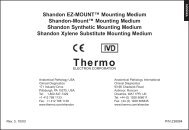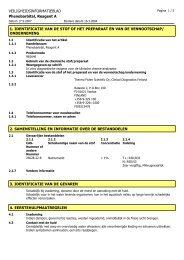Basic UV-Vis Theory, Concepts and Applications
Basic UV-Vis Theory, Concepts and Applications
Basic UV-Vis Theory, Concepts and Applications
You also want an ePaper? Increase the reach of your titles
YUMPU automatically turns print PDFs into web optimized ePapers that Google loves.
<strong>Basic</strong> <strong>UV</strong>-<strong>Vis</strong> <strong>Theory</strong>, <strong>Concepts</strong> <strong>and</strong> <strong>Applications</strong><br />
Table 1 Relationship between light absorption <strong>and</strong> color<br />
Color absorbed Color observed Absorbed radiation(nm)<br />
Violet Yellow-green 400-435<br />
Blue Yellow 435-480<br />
Green-blue Orange 480-490<br />
Blue-green Red 490-500<br />
Green Purple 500-560<br />
Yellow-green Violet 560-580<br />
Yellow Blue 580-595<br />
Orange Green-blue 595-605<br />
Red Blue-green 605-750<br />
A close relationship exists between the color of a substance <strong>and</strong> its electronic structure. A molecule or ion will exhibit absorption<br />
in the visible or ultraviolet region when radiation causes an electronic transition within its structure. Thus, the absorption of light<br />
by a sample in the ultraviolet or visible region is accompanied by a change in the electronic state of the molecules in the sample.<br />
The energy supplied by the light will promote electrons from their ground state orbitals to higher energy, excited state orbitals or<br />
antibonding orbitals.<br />
Potentially, three types of ground state orbitals may be involved:<br />
i) σ (bonding) molecular as in<br />
ii) π (bonding) molecular orbital as in<br />
Page 7 of 28


